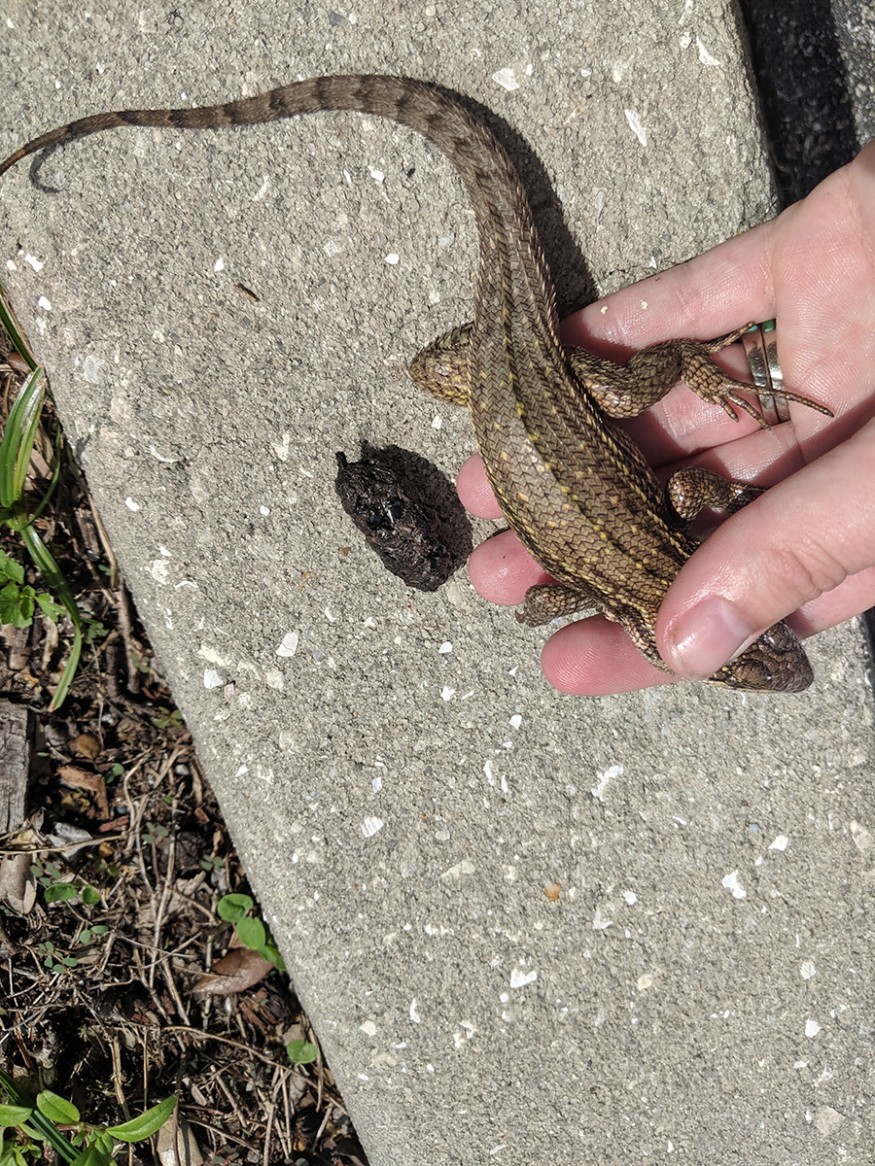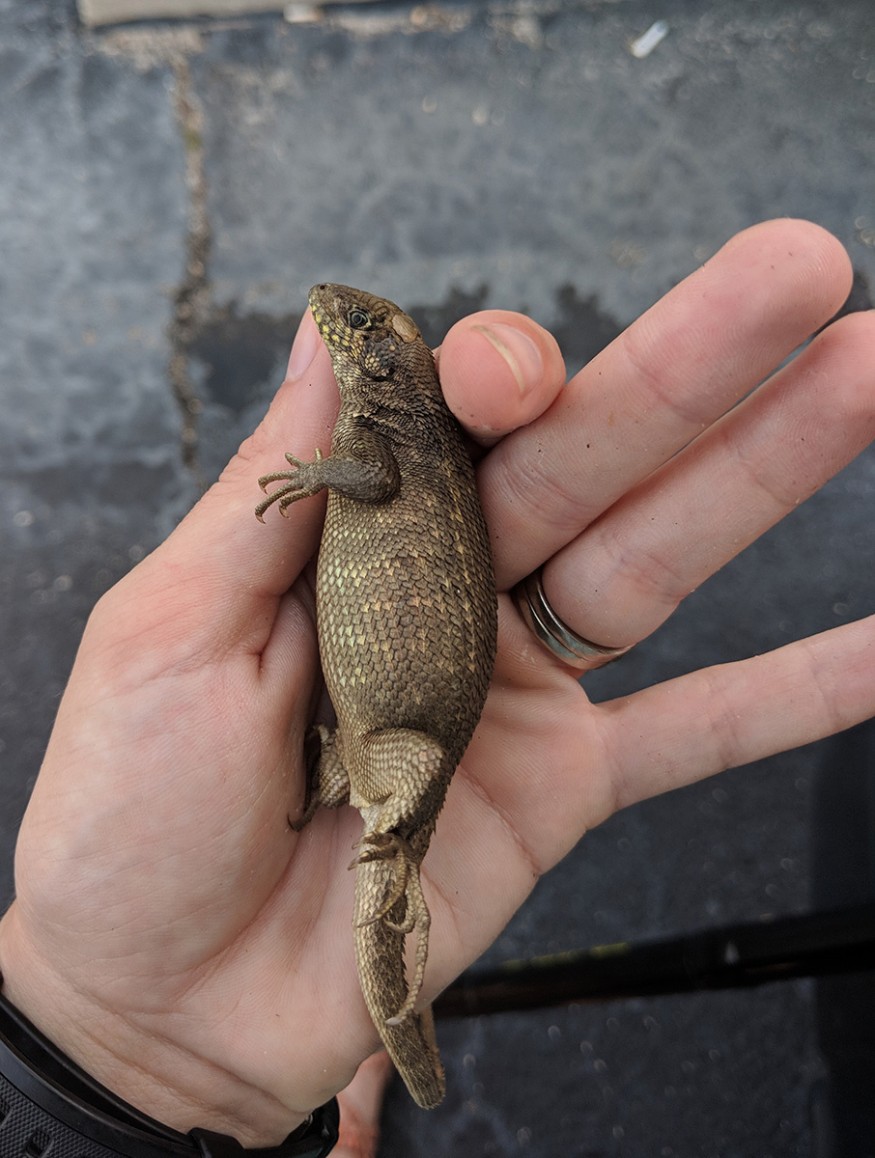

Leiocephalus carinatus
by Blackburn Lab
on Sketchfab
Almost everyone has experienced constipation, but not like this curly-tailed lizard discovered in Florida. Accumulated poop made up about 80% of the lizard's body. The lizard was having a hard time digesting the contents of its stomach that it was euthanized to rid it of its misery.
Found dwelling near a pizza parlor in Cocoa Beach, the lizard's fatty diet was to blame for almost 22 grams of poop in its stomach. Its bolus-to-body mass ratio was found to be six times greater than the record previously held by a Burmese python.
Researchers spotted the bulging lizard and initially thought it was pregnant. However, when they tried feeling for eggs, they only felt a slushy stomach with the same feel as 'silly putty.'
Natalie Claunch, a Ph.D. candidate in the University of Florida School of Natural Resources and Environment and her colleague, Edward Stanley, Director of the Florida Museum's Digital Discovery and Dissemination Laboratory, brought the lizard to their laboratory to examine it.
After a CT scan, they discovered that the mass causing the lizard's bulgy belly was nothing but a massive piece of poop. Later on, they found out that it had been feeding on insects covered in greasy sand curdled in its body.
Experts believe that the lump of feces built up over time and became too large for the creature to poop out. Furthermore, the longer the lizard was constipated, the larger the poop became.
Stanley said that he was stunned by how little space there was left for all the other organs, looking at the 3D model. When the team stumbled on the creature, they assumed that it was starving because it was unable to digest the contents in its stomach that merely turned into a big bolus.
Information on the Curly-Tailed Lizard
Curly-tailed lizards can be found in the Caribbean, Bahamas, the Cayman Islands, and Cuba. They were brought to Florida in the early 1940s to help control sugar cane pests.
The lizards are commonly found in open forests, sandy beaches, and rocky steppes. The species measures from 15 to 35 centimeters. Its dorsal scales are large, shingled, and strongly keeled.
The lizards have a strong build, with a tail longer than its snout-vent length. Their tails may be whipped or curled up when they get excited.
Claunch said that the species' diet, which comprises anything from bits of fish to cheese and crackers, puts the lizard at risk for fecal impaction. She adds that lizards are like sparrows or seagulls, ready to eat anything left behind by humans.
She said that the lizards offer a crucial case study of how invasive populations can successfully establish themselves in Florida.
Claunch said that fecal impaction this extreme is a rare find in wild lizards. She adds that the species is known to eat only small, passable amounts of sand or soil when capturing prey. Sluggish animals tend to be easy targets for predators, which is why the lizards only eat in small quantities.
Claunch says that the saying is true that you never know what you'll find when you least expect it. She adds that they wouldn't have seen the lizard with fecal impaction if they haven't been working on a physiology project needing hundreds of the species.
Read Also: Scientist Shocked to Find a Lizard That Can Both Lay Eggs and Give Birth: Is this a Sign of Evolutionary Shift?© 2025 ScienceTimes.com All rights reserved. Do not reproduce without permission. The window to the world of Science Times.












